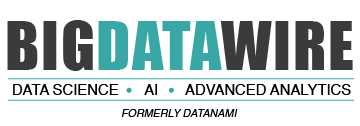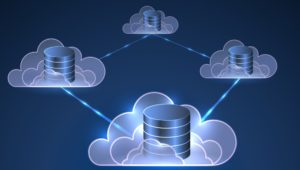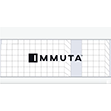
8 Best Practices for Approaching Master Data Governance in the Cloud
(Inked Pixels/Shutterstock)
Expanding your footprint to the cloud has gotten easier in recent years, and as a result, a growing community of data consumers are now motivated and energized to collect, capture, store, and analyze data for insights and business decision making. While more enterprise organizations are looking to go all-in on cloud, CIOs will learn that the nature of their data may require a hybrid approach to truly modernize their IT infrastructure. In fact, Gartner analysts believe hybrid IT will be the standard in 2019.
Despite traction, information management stakeholders still have concerns about the potential risk of managing their data, both in the cloud and on premises, for various reasons.
Enterprises have consistently cited security and governance as barriers to cloud adoption, looking for increased control where the cloud infrastructure is shared with a third party. There’s also a growing set of regulations that mandate stricter governance of personal data, such as the California Consumer Privacy Act (CCPA), the European Union’s General Data Protection Regulation (GDPR), and more. Not to mention democratization and data awareness. Moving data into any kind of data lake (cloud-based or on-premises) runs the risk of losing track of which data assets have been moved, the characteristics of their content, and details about their metadata. So discoverability becomes very important.
These factors highlight the need for increased data classification, cataloging, access control, data quality management, and monitoring of the flow of data through the organization (data lineage) as core data governance competencies that every organization should look for in a cloud provider. Addressing these risks, without abandoning cloud computing’s many benefits, makes it more important than ever to understand data governance in the cloud. And of course, know which parts are most critical.
Simply put, data governance encompasses the ways that people, processes, and technology can work together to enable business efficiency along with defined and agreed-upon data policies that ensure compliance is met. As a given company generates more data and moves it to the cloud, they need to consider a comprehensive approach to data governance. Why? Because good data governance can inspire customer trust, allow the company to extract more value from their data and therefore lead to more competitive offerings and improvements in, for example, customer experience.
There are well-known frameworks out there that can be great resources for how to approach data governance (i.e. Gartner framework , Forrester framework ). But these steps aren’t always linear or the same for every organization.
With that in mind, here are eight best practices for any company to consider as they approach data governance in the cloud:
1. Data Discovery and Assessment
Cloud-based environments offer an economical option for creating and managing data lakes, but the risk remains for ungoverned migration of data assets. You can mitigate this with improved data discovery and assessment processes. By identifying data assets within a primary, hybrid, or multi-cloud environment you can trace and record each data asset by origin, lineage, object metadata, and discovery what transformations have been applied to the data. Better data discovery means that users can find the data they need, when they need it, which leads to efficiency and better, data-driven decision making.
2. Data Classification and Organization
Properly evaluating a data asset and scanning the content of its different attributes can help categorize the data asset for subsequent organization. This process can also infer whether the object contains sensitive data, and if so, classifying each data asset in terms of the different levels of data sensitivity, including personal and private data, confidential data, and intellectual property. To implement data governance in the cloud, you’ll need to profile and classify sensitive data in order to inform which governance policies and procedures apply to the data.
3. Data Cataloging and Metadata Management
Once your data assets are assessed and classified, it is crucial that you document your learnings so that your communities of data consumers have visibility into your organization’s data landscape. You need to maintain a data catalog that contains structural metadata, data object metadata, and the assessment of levels of sensitivity in relation to the governance directives (such as compliance with one or more data privacy regulations). The data catalog not only allows data consumers to view this information, but it can also serve as part of a reverse index for search and discovery, both by phrase and (given the right ontologies) by concept. It is also important to understand the format of structured and semi-structured data objects, and allow your systems to handle these data types differently, as necessary.
4. Data Quality Management
Different data consumers may have different data quality requirements, so it’s important to provide a means to document data quality expectations, as well as techniques and tools for supporting the data validation and monitoring process. These management processes include creating controls for validation, enabling quality monitoring and reporting, supporting the triage process for assessing the level of incident severity, enabling root cause analysis and recommendation of remedies to data issues, and data incident tracking. The right processes for data quality management will provide measurably trustworthy data for analysis.
5. Data Access Management
There are two aspects of governance for data access. The first aspect is the provisioning of access to available assets. It’s important to provide data services that allow data consumers to access their data, and fortunately, most cloud platform providers provide methods for developing data services. The second aspect is prevention of improper or unauthorized access. It’s important to define identities, groups, and roles, and assign access rights to establish a level of managed access. This best practice involves managing access services as well as interoperating with the cloud provider’s identity and access management (IAM) services by defining roles, specifying access rights, and managing and allocating access keys for ensuring that only authorized and authenticated individuals and systems are able to access data assets according to defined rules.
6. Auditing
Organizations must be able to assess their systems to make sure that they are working as designed. Monitoring, auditing and tracking (who did what and when and with what information) helps security teams gather data, identify threats, and act on them before they result in business damage or loss. It’s important to perform regular audits: check the effectiveness of controls in order to quickly mitigate threats and evaluate overall security health.
7. Data Protection
Perimeter security is not, and never has been sufficient for protecting sensitive data. Attempting to prevent someone from breaking into your system has limited success, but at some point, your data may become exposed. It’s important to institute additional methods of data protection to ensure that exposed data cannot be read, including encryption at rest, encryption in transit, data masking, and permanent deletion.
8. Data Literacy
A critical component to an organization’s success with data governance relies on education, training, and a true understanding of what can and can’t be done with your data. Technology on its own isn’t enough – it takes people, process, policies to drive organizational change and enable users to see and protect the value of their data as a business asset.
Overall, organizations will likely reap immense benefits as they promote a data-driven culture – a large part of which involves a strong understanding of data governance. By putting these recommendations into practice, information management professionals will be one step closer.
About the author: Evren Eryurek, PhD is the leader of Data Analytics and Data Management portfolio of Google Cloud. As the director of product management, Evren’s responsibilities cover Streaming Analytics, Dataflow, Beam, Messaging (Pub/Sub & Confluent Kafka), Data Governance, Data Catalog & Discovery and Data Marketplace as the Director of Product Management. Prior to joining Google, he was the SVP & Software Chief Technology Officer for GE Healthcare, near $20 billion segments of GE. A graduate of the University of Tennessee, Evren holds a master’s and a doctorate degree in Nuclear Engineering and over 60 U.S. patents.
Related Items:
Why Investing in Your Team’s Data Culture Could Be the Most Important Money You Spend
The State of Storage: Cloud, IoT, and Data Center Trends
July 3, 2025
- FutureHouse Launches AI Platform to Accelerate Scientific Discovery
- KIOXIA AiSAQ Software Advances AI RAG with New Version of Vector Search Library
- NIH Highlights AI and Advanced Computing in New Data Science Strategic Plan
- UChicago Data Science Alum Transforms Baseball Passion into Career with Seattle Mariners
July 2, 2025
- Bright Data Launches AI Suite to Power Real-Time Web Access for Autonomous Agents
- Gartner Finds 45% of Organizations with High AI Maturity Sustain AI Projects for at Least 3 Years
- UF Highlights Role of Academic Data in Overcoming AI’s Looming Data Shortage
July 1, 2025
- Nexdata Presents Real-World Scalable AI Training Data Solutions at CVPR 2025
- IBM and DBmaestro Expand Partnership to Deliver Enterprise-Grade Database DevOps and Observability
- John Snow Labs Debuts Martlet.ai to Advance Compliance and Efficiency in HCC Coding
- HighByte Releases Industrial MCP Server for Agentic AI
- Qlik Releases Trust Score for AI in Qlik Talend Cloud
- Dresner Advisory Publishes 2025 Wisdom of Crowds Enterprise Performance Management Market Study
- Precisely Accelerates Location-Aware AI with Model Context Protocol
- MongoDB Announces Commitment to Achieve FedRAMP High and Impact Level 5 Authorizations
June 30, 2025
- Campfire Raises $35 Million Series A Led by Accel to Build the Next-Generation AI-Driven ERP
- Intel Xeon 6 Slashes Power Consumption for Nokia Core Network Customers
- Equal Opportunity Ventures Leads Investment in Manta AI to Redefine the Future of Data Science
- Tracer Protect for ChatGPT to Combat Rising Enterprise Brand Threats from AI Chatbots
June 27, 2025
- Inside the Chargeback System That Made Harvard’s Storage Sustainable
- What Are Reasoning Models and Why You Should Care
- Databricks Takes Top Spot in Gartner DSML Platform Report
- LinkedIn Introduces Northguard, Its Replacement for Kafka
- Change to Apache Iceberg Could Streamline Queries, Open Data
- Agentic AI Orchestration Layer Should be Independent, Dataiku CEO Says
- Why Snowflake Bought Crunchy Data
- Fine-Tuning LLM Performance: How Knowledge Graphs Can Help Avoid Missteps
- Top-Down or Bottom-Up Data Model Design: Which is Best?
- The Evolution of Time-Series Models: AI Leading a New Forecasting Era
- More Features…
- Mathematica Helps Crack Zodiac Killer’s Code
- ‘The Relational Model Always Wins,’ RelationalAI CEO Says
- Confluent Says ‘Au Revoir’ to Zookeeper with Launch of Confluent Platform 8.0
- DuckLake Makes a Splash in the Lakehouse Stack – But Can It Break Through?
- Solidigm Celebrates World’s Largest SSD with ‘122 Day’
- The Top Five Data Labeling Firms According to Everest Group
- Supabase’s $200M Raise Signals Big Ambitions
- Toloka Expands Data Labeling Service
- With $17M in Funding, DataBahn Pushes AI Agents to Reinvent the Enterprise Data Pipeline
- Databricks Is Making a Long-Term Play to Fix AI’s Biggest Constraint
- More News In Brief…
- Astronomer Unveils New Capabilities in Astro to Streamline Enterprise Data Orchestration
- Databricks Unveils Databricks One: A New Way to Bring AI to Every Corner of the Business
- Seagate Unveils IronWolf Pro 24TB Hard Drive for SMBs and Enterprises
- Gartner Predicts 40% of Generative AI Solutions Will Be Multimodal By 2027
- BigBear.ai And Palantir Announce Strategic Partnership
- Astronomer Introduces Astro Observe to Provide Unified Full-Stack Data Orchestration and Observability
- Databricks Donates Declarative Pipelines to Apache Spark Open Source Project
- Deloitte Survey Finds AI Use and Tech Investments Top Priorities for Private Companies in 2024
- Code.org, in Partnership with Amazon, Launches New AI Curriculum for Grades 8-12
- Databricks Announces Data Intelligence Platform for Communications
- More This Just In…




























